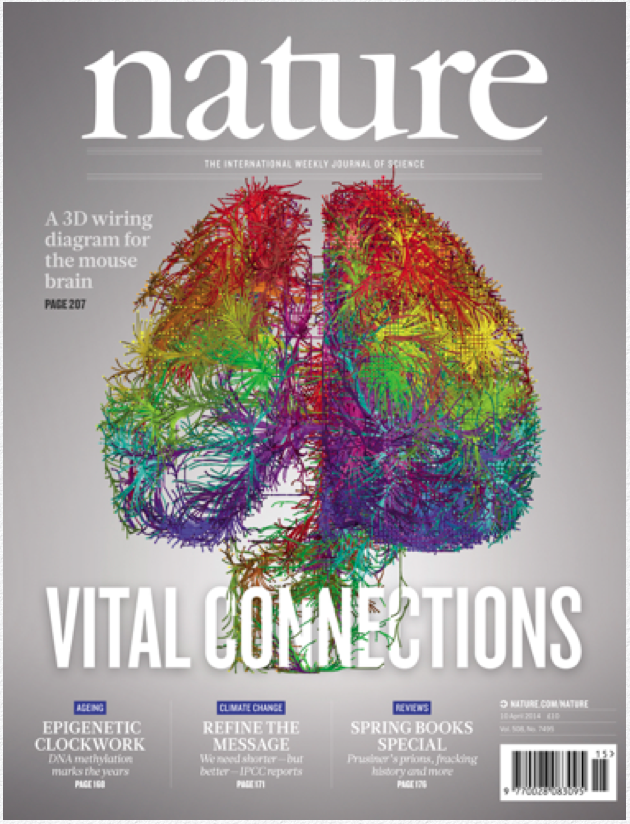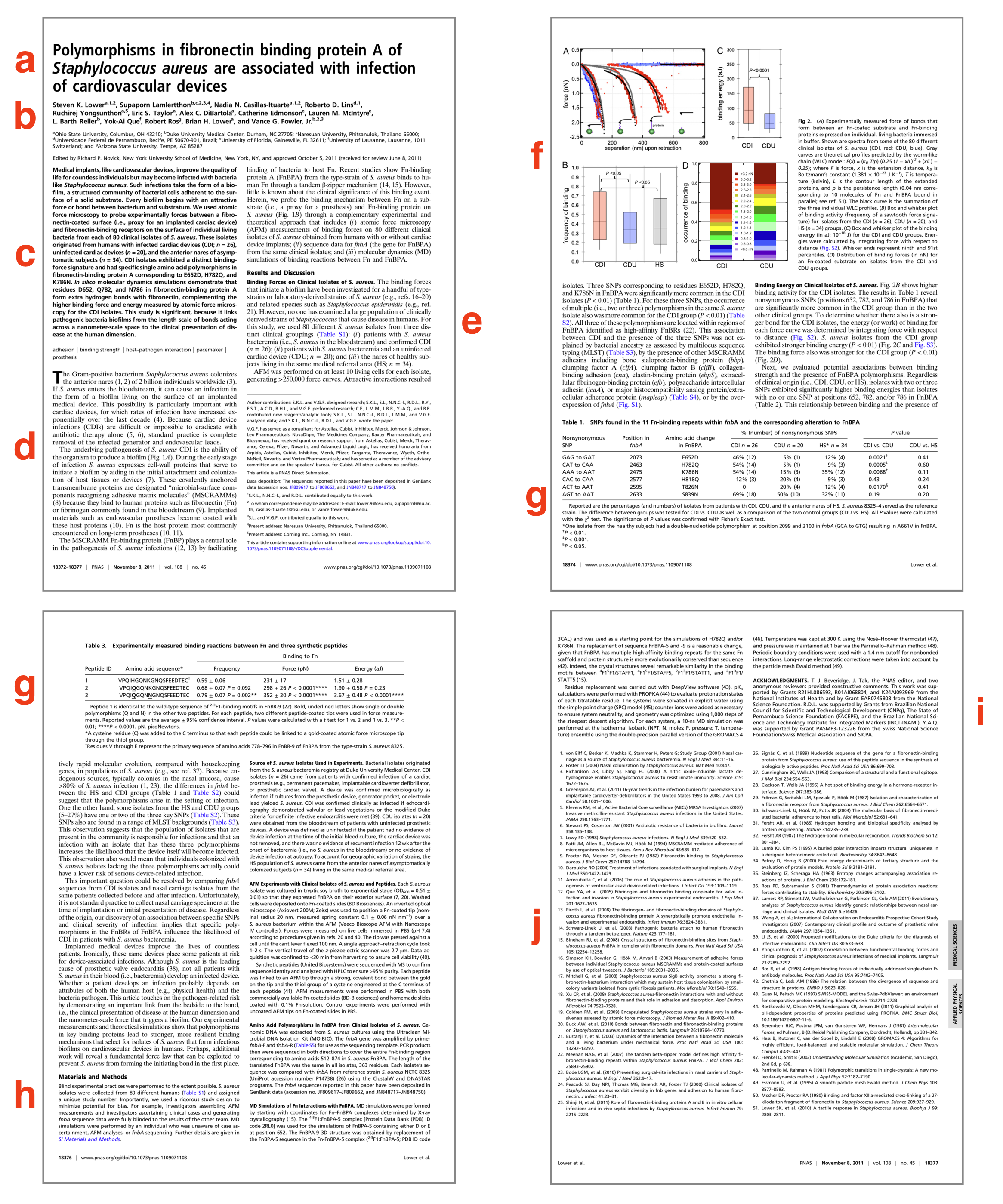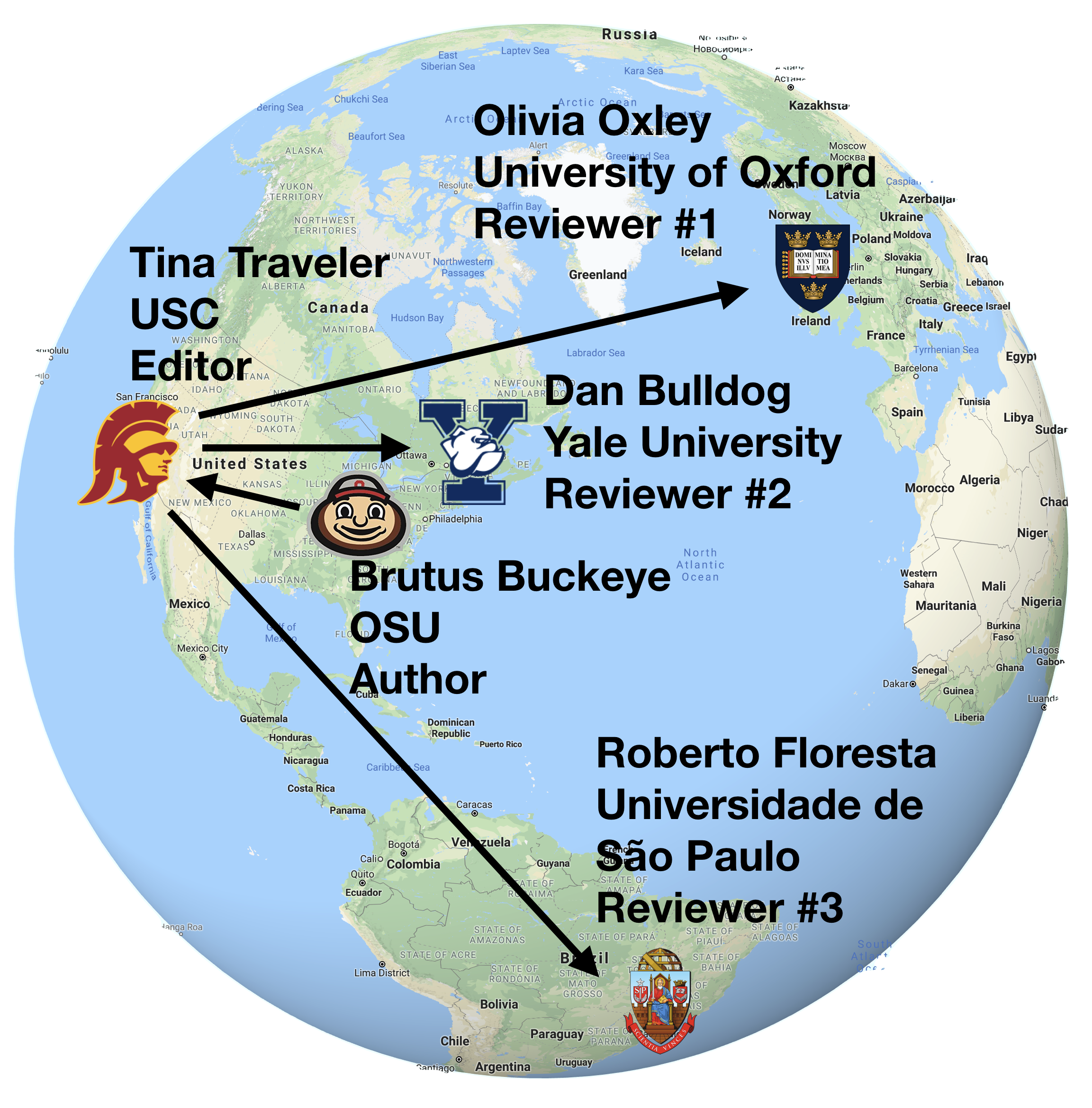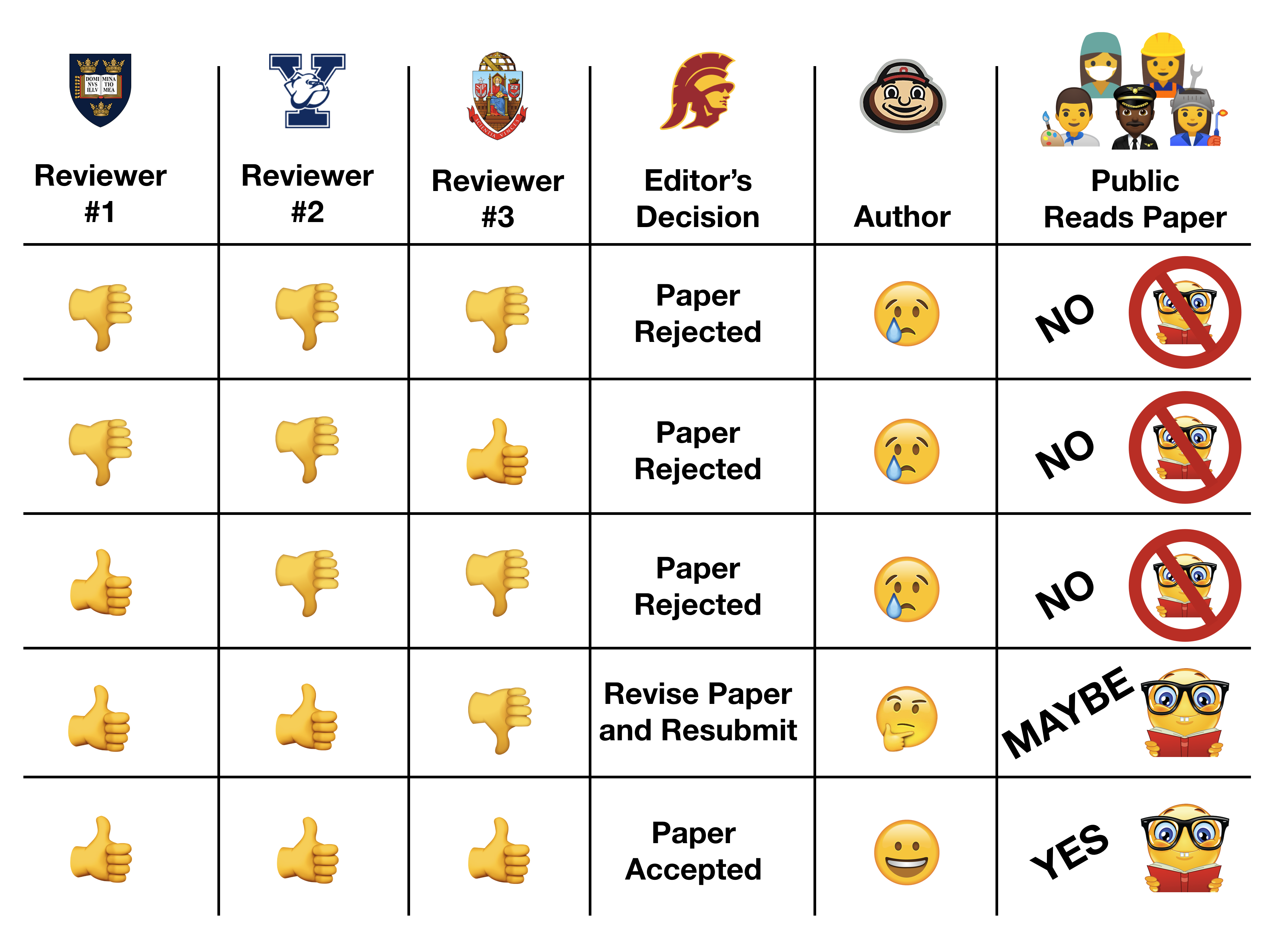Primary Sources
Peer-Reviewed Journal Articles
- Primary sources of information are peer-reviewed journal articles.
- Journal articles go through a rigorous peer review process prior to publication.
- Are the most trusted and well-respected sources of scientific information.
- Provide a first-hand account of the research.
- In addition to journal articles, patents and technical reports are also considered primary sources of information.
Primary Sources
Most sources used in a scientific poster come from primary sources (Fig. 10). Primary sources are peer-reviewed journal articles that have successfully passed through a rigorous review process prior to publication. Only after a manuscript (it is not referred to as an article until it is published) has successfully passed through this process will it be published.
Many high-impact journals are very selective in determining whether to publish a manuscript. Some journals are so selective that they reject greater than 90% of all manuscripts they receive. If a manuscript is rejected, the public will never see or read about the research. Because journal articles have gone through a rigorous peer-review process, they are seen as the most trusted and well respected sources of scientific data and information.
Primary sources are journal articles that have been written by researchers, scientists and engineers then submitted to a journal for publication. These professionals are the original source of information discussed in the article.
A scientist will;
- conduct research
- write a manuscript describing their research and its findings and then,
- send the manuscript to a journal requesting that it be considered for peer review and potential publication.
A journal editor reviews the manuscript to determine whether to send it out for a full peer review. If it meets their standards then the manuscript is sent to 2-5 experts in that particular field of research. These experts take a few weeks to review the article and make a recommendation to the editor about whether the manuscript is acceptable for publication. Experts are often critical of a manuscript and the research that is presented in the manuscript. It is common, especially for high-impact journals, that peer reviewers advise the editor to reject the manuscript outright. If this happens, the manuscript is sent back to the authors and the public never reads about the research. The authors must conduct additional experiments, re-write their manuscript and then submit a revised manuscript back to the same journal, or often another journal. Then the entire peer review process starts all over again.
High impact journals (e.g., Science, Nature and Proceedings of the National Academies of Science, PNAS) set high standards for success and will reject the vast majority (e.g., greater than 90%) of all manuscripts that they receive due to unfavorable reviews. Typically, the higher a journal’s impact factor, the higher its rejection rate.
There are thousands of professional journals that publish hundreds of individual articles each year. Scientists have been publishing articles in journals for hundreds of years. This works out to millions of published articles contained within all these journals. Therefore, the best way to find journal articles that are of interest to you is to use a computer and a search engine.
Scientific Journal Articles
A scientific journal article (Fig. 11) is a first-hand account of new research that has been conducted by scientists and engineers. It has went through a rigorous peer review process and been deemed worthy of publication. Journal articles function to communicate scientific research with the public. Some journals are published weekly while other journals are publish bimonthly or monthly.
Figure 10. The Journal Nature

Journal articles follow a standard format that includes: title, author names, abstract, introduction, materials & methods, results, discussion, acknowledgement and references (Fig. 11). Articles also contain figures and tables that are used by the authors to effectively communicate data and results to the reader. This standard format makes it easy for the reader to find and understand each part of the research. This standard format is also followed by scientific posters.
Figure 11. Parts of a Journal Article

Peer Review
A research article that has been published in a journal went through a rigorous review process where experts (i.e., peer scientists) evaluated the article and deemed the research worthy of publication. This process is referred to as scientific peer review. It is done to ensure that the research is original, that experiments are conducted in an appropriate manner, that data support results and conclusions and that articles meets quality standards set forth by the publisher. Only those articles that successfully pass through the peer review process are published and read by the public. Articles that do not make it through the peer review process are rejected, not published and therefore are never read by the public.
Figure 12. Peer Review Process

Steps in Peer Review Process
Step 1. Dr. Brutus Buckeye is a professor at Ohio State University (OSU) who has completed his research, wrote a paper about his findings and wants to publish his paper in the Journal of Natural Systems.
Step 2. Dr. Buckeye sends his paper to Dr. Tina Traveler who is a professor at the University of Southern California (USC) and an editor for the Journal of Natural Systems. Dr. Traveler reads the paper to determine if the research is original, significant and appropriate for publication in the Journal of Natural Systems. Dr. Traveler will either reject the paper outright or send the paper to several experts to evaluate. A paper is typically reviewed by 3-5 experts.
Step 3. In this example (Fig. 12), Dr. Olivia Oxley (professor at University of Oxford), Dr. Dan Bulldog (professor at Yale University) and Dr. Roberto Floresta (professor at Universidad de Sao Paulo) agree to review the paper. The three professors read the paper and write a thorough and detailed review of the paper. They send their reviews to the editor (Dr. Traveler) and recommend that the paper be accepted or rejected.
Step 4. The editor (Dr. Traveler) reads all three reviews, their recommendations and then makes an overall decision to accept or reject the paper for publication in the Journal of Natural Systems (Fig. 13).
Figure 13. Peer Review Outcomes

